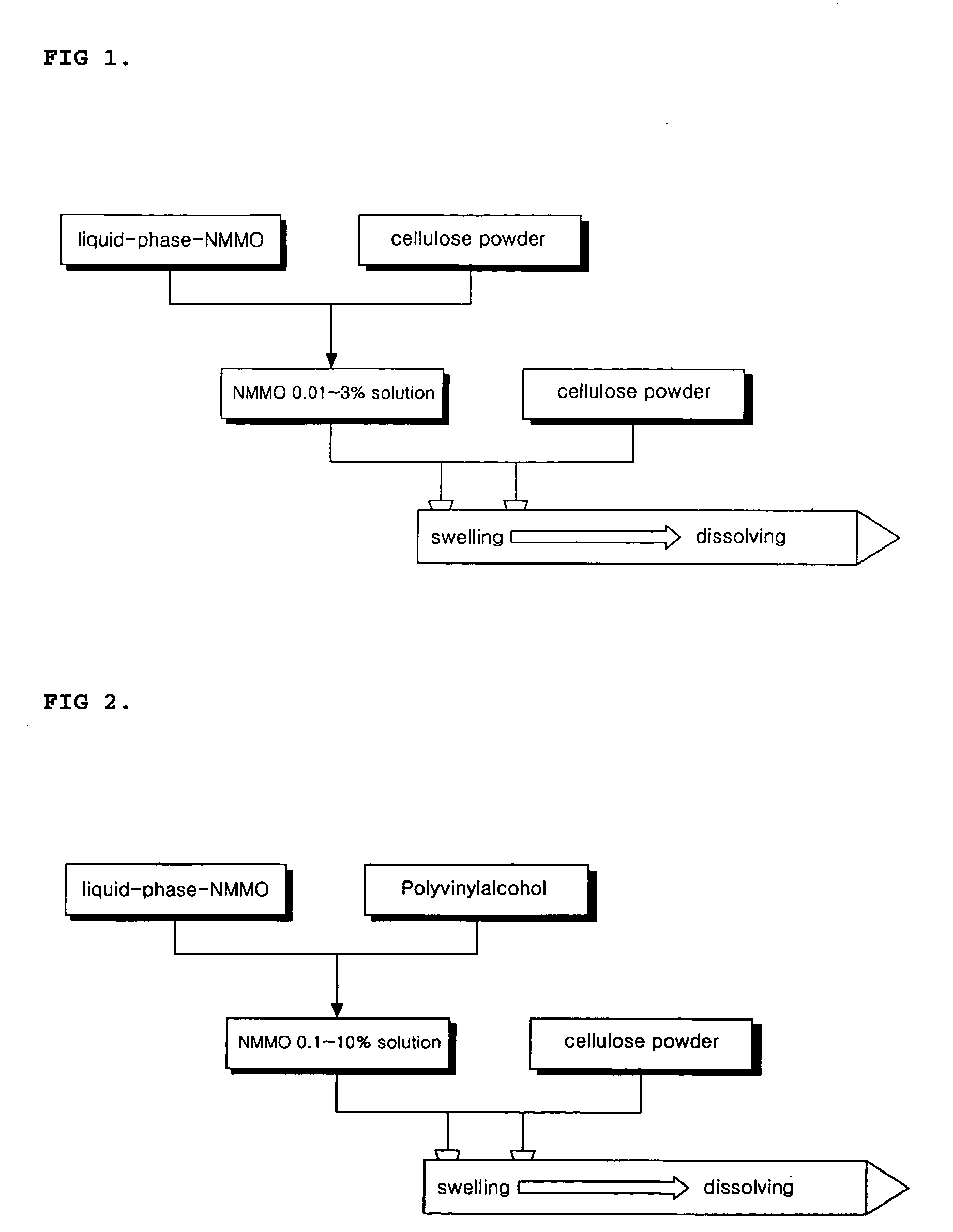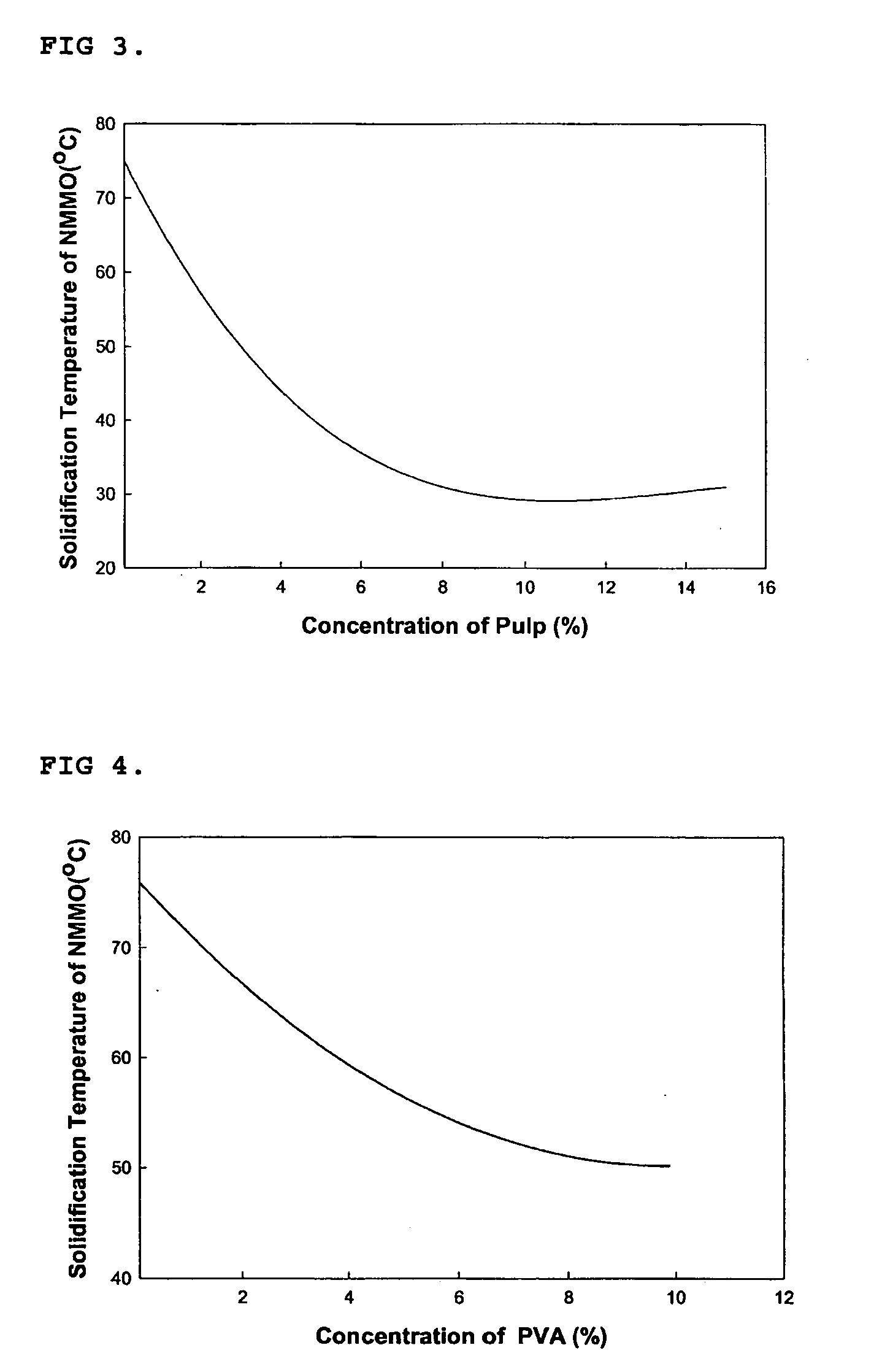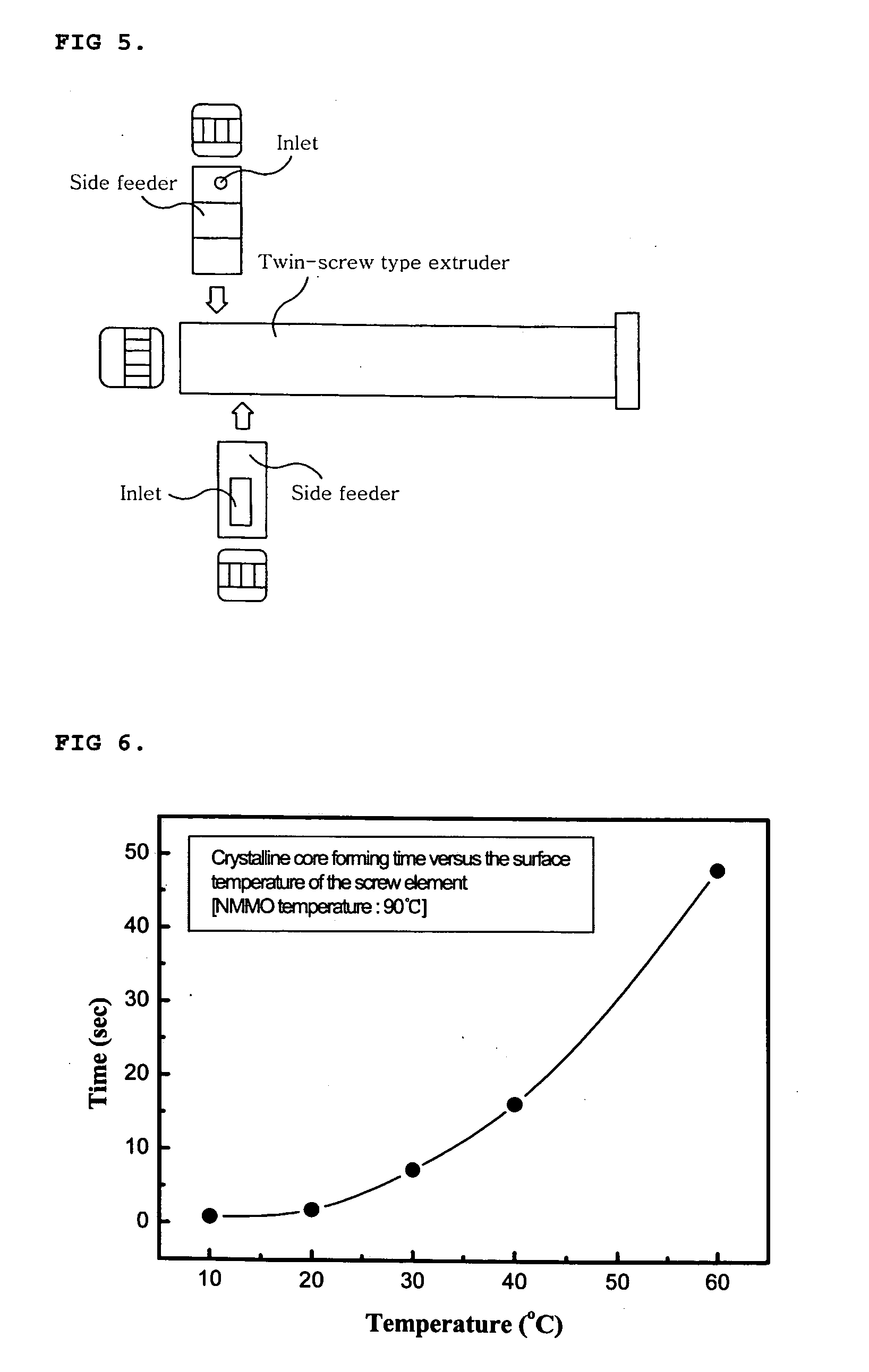Lyocell multifilament
a lyocell multifilament, high modulus technology, applied in the direction of cellulosic plastic layered products, yarn, transportation and packaging, etc., can solve the problems of low tenacity and modulus, process lengthening, and inability to meet the various functions required in the tire cord perfectly, so as to improve the low tenacity and low initial modulus of viscose rayon, increase mechanical properties, and improve the molecular orientation of a fiber
- Summary
- Abstract
- Description
- Claims
- Application Information
AI Technical Summary
Benefits of technology
Problems solved by technology
Method used
Image
Examples
example [UNK]
EXAMPLE 1˜7
[0058] Pulp with a degree of polymerization (DPW) of 800-1,650 (sold from Buckeye Co.) was pulverized into powders with a size of less than 500 μm. Then, the powders were forcibly fed into a twin-screw extruder by a side feeder for pulp supply. NMMO hydrate with a water content of 13.0 wt % was maintained at 90° C. and continuously fed into a side feeder for NMMO supply using a metering pump. At this time, a screw within the side feeder for NMMO supply was adjusted to 30° C. to solidify the NMMO which had been fed in a liquid state. After the cellulose powders and the solid NMMO were introduced into the twin-screw extruder adjusted to a temperature of 50-110° C., they were subjected to mixing, shearing and dissolution steps to prepare homogeneous cellulose solution. Then, the cellulose solution was spun at 150 m / min.
[0059] In the spinning step, the number of orifices in a spinning nozzle was 1,000, and the orifice diameter was 120-200 μm. The solution spun from the spinn...
examples 8-14
[0062] A cellulose solution was produced as described below and then spun through a nozzle in the same manner in Example 1. A cellulose sheet that the weight mean degree of polymerization is 1,200 were fed into a pulverizer to produce cellulose powder having a particle size of less than 500 micrometers, and then, the cellulose powder were dissolved in NMMO to produce a NMMO solution containing cellulose of 0.1 to 3.0% by weight. NMMO solution in which the cellulose had been dissolved at 0.1-3.0% by weight was fed into the feed portion of an extruder having an internal temperature of 65° C. using a metering pump. Thus, this Example is characterized by the method where the solution in which a small amount of cellulose had been dissolved in molten NMMO was introduced into the extruder. The concentration of cellulose dissolved in NMMO is termed “first cellulose concentration”.
[0063] At this time, the cellulose powders were adjusted to a given concentration in view of total cellulose co...
examples 15-21
[0066] A cellulose solution was produced as described below and then spun through a nozzle in the same manner in Example 1. Polyvinylalchol having a weight mean degree of polymerization of 1,700 and a saponification value of 99.5% were dissolved in NMMO to produce a NMMO solution containing polyvinylalcohol of 1% by weight. Firstly, the NMMO solution containing polyvinylalcohol of 1% by weight was fed into a twin-screw type extruder having its inner temperature maintained at 78° C. through a metering pump at a speed of 6,900g / hour. The cellulose sheet having a weight mean degree of polymerization of 1,200 was pulverized into cellulose powder having a particle size of less than 500 micrometer using a pulverizer, and then, the cellulose powder was fed into the twin-screw type extruder through a screw-type feeder at the speed of 853g / hour. Meanwhile, the liquid-state NMMO solution containing polyvinylalcohol of 1% by weight was fed into the extruder with it maintained at 74° C. And the...
PUM
| Property | Measurement | Unit |
|---|---|---|
| length | aaaaa | aaaaa |
| length | aaaaa | aaaaa |
| degree of polymerization | aaaaa | aaaaa |
Abstract
Description
Claims
Application Information
 Login to View More
Login to View More - R&D
- Intellectual Property
- Life Sciences
- Materials
- Tech Scout
- Unparalleled Data Quality
- Higher Quality Content
- 60% Fewer Hallucinations
Browse by: Latest US Patents, China's latest patents, Technical Efficacy Thesaurus, Application Domain, Technology Topic, Popular Technical Reports.
© 2025 PatSnap. All rights reserved.Legal|Privacy policy|Modern Slavery Act Transparency Statement|Sitemap|About US| Contact US: help@patsnap.com



